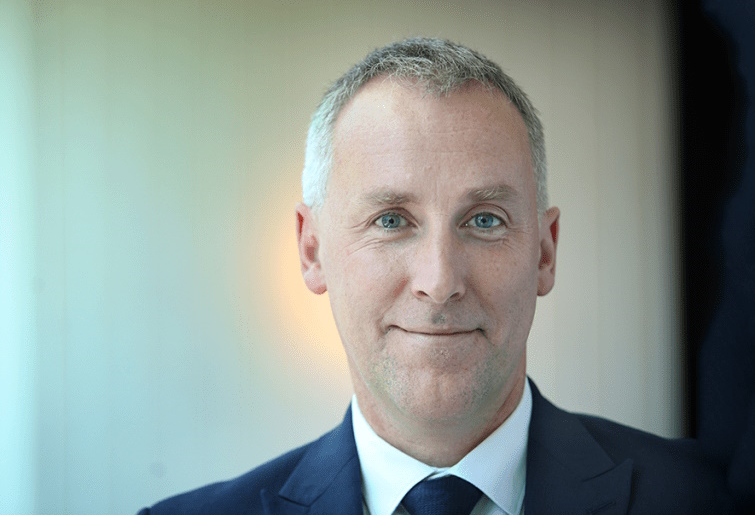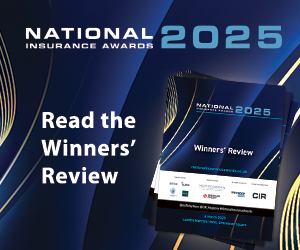Tony Tarquini shares his perspectives with CIR on the role that insurtech, the IIoT and AI may play in improving operational outcomes, as well as brand issues, for the global insurance industry
Tony Tarquini has been a thought leader, advisor and mentor in insurance technology for over 30 years. Co-author of Amazon bestseller, The InsurTECH Book, Tony speaks and chairs at conferences globally, including at the recent Insurance Today Series, debating the hot topics with insurance executives, helping audiences to make better decisions in their everyday working lives.
It was not long ago that the insurance industry was considered to be behind technologically, but that’s no longer the case, is it?
The truth of the matter is that the insurance industry is definitely catching up, but we are nowhere near the same technological level as the banking sector. A major reason for this is that the insurance industry is a risk management-based industry, and so there is an intrinsic reluctance to do anything that is fundamentally leading edge. Consequently, there is an unwillingness to be the first to make any mistakes. After all, it is the second mouse that gets the cheese!
When I first started working in this industry, there were very few insurtechs – around 40 companies serving the insurance industry from a software point of view, all in a very close-knit group. Today, the picture looks totally different, with a meteor shower of insurtechs having arrived on the scene.
I think it’s been difficult for insurers to keep up; to work out who their partners are going to be, which are the best companies to work with, and why, and, ultimately, to establish just what they’re going to get out of it. And that’s not easy.
Not that long ago, there was around US$7 billion a year of venture capital money flooding into the insurtech world, making it the number one destination for venture capital money of all industries because there was a sense that the insurance industry was ripe for disruption. As a result, though, many of the companies that were spawned at the time probably won’t be around in a few years’ time.
I’m currently working with a number of insurers to implement systems to manage their innovation and insurtech communities – looking at ways to help insurers take a much more pragmatic and automated approach to working with the burgeoning insurtech community.
How will the insurtech community evolve over the coming years?
Some of the new insurtech startups that we have seen in recent years have come from other industries and, after a short time in the insurance space, realise it is not as simple as they thought and get back out again. I’ve seen this happen on numerous occasions. Some of the smaller startups just won’t make it, and even if they have some traction – and maybe even a customer base – they will run out of money. They will probably be acquired by other insurtechs, some of which are the larger, multi-billion turnover, insurance technology companies that have been around the market for a long time, such as Salesforce. There are a number of insurers and reinsurers playing in the market as well, with a lot of M&A, so it’s quite a dynamic space at the moment.
To what degree is artificial intelligence currently being deployed successfully by insurtechs?
The good news from an AI point of view is that insurance is a great candidate for using AI. Whilst the concept of insurance is quite simple, there are operational complexities that lend themselves well to AI – possibly even more so than many other knowledge-based industries. I think what’s important here is that AI is not identified narrowly as a ‘project’; rather it should be considered as more of a strategic transformation programme. It’s a journey… and it’s a very long journey! In fact, it’s a journey without end. Neither your customers nor the regulator will thank you for rushing this particular technology.
Over the last few decades, a lot of IT has focused on taking what we used to do with filing cabinets and paper and replicating that in software, rather than thinking about how you could write a better process. Automation software has, over the last ten years or so, had quite a profound effect, and when you add AI into the equation, that’s potentially more powerful. AI is really good at crunching work – tasks that you can replicate over and over again, matching numbers and looking at patterns. This is particularly powerful for high-volume personal lines business. Current AI tools are less useful for creative thought, and so, for commercial lines, AI needs to be used alongside people – particularly for large, complex risks and claims, for example.
What we are seeing at the moment is insurers and brokers implementing AI solutions for augmented underwriting, or to address large documents, with carriers and brokers experimenting with generative AI to scan large submissions to compare products, geographies, limits and so on. At the moment, this is a manual process and a time-consuming one. This is where AI can be really useful. It might not be glamorous, but operationally it can be quite transformative.
At the same time, insurers are quite right to be cautious of AI. They’re working in a highly regulated environment and already have a brand problem as an industry. Problems such as the one Air Canada experienced after its chatbot invented an entirely new refund programme are the sorts of problems the insurance industry does not need, given its already difficult brand challenge. GenAI does ‘hallucinate’, or in other words, it can fabricate responses in one way or another.
In the case of Air Canada, the judge decided that if the bot says the customer is entitled to a full refund, and they have a screen grab proving that to be the case, then a full refund plus penalties are due. The bottom line is that companies are responsible for their chatbots’ outputs.
We’ve not yet seen a great deal of announcements about what insurers are doing with AI, but I suspect we will get to that stage very soon. At the same time, there are segments and lines where AI simply cannot yet replace the traditional approach. The more complex and specialty risks still need trust, and they need humans operating in them. It will be quite a long time before automation and AI start to replace humans in marine and aviation, for instance. Yes, there will be elements of automation within it, but ultimately it will be about the underwriter, the broker, and the client working together.
How can insurtech and the IoT unite to create better outcomes for insurers and insureds?
This is a topic that goes to the very heart of insurance. At its core, traditional insurance is a promise to pay a valid claim during the year. Barring a change in the policy, an insurer would not otherwise need – or want – to hear from an insured until prior to renewals on some lines. The same might not be the case for large complex claims, but it is almost certainly the case for high-volume personal lines. The IoT offers global potential to completely change that dynamic, so that instead of having an annual touchpoint with customers, insurers get an update every 30 seconds.
With the expanding IoT, we are monitoring oil platforms, vessels, aircraft, agriculture, the environment – even icebergs are being monitored. Smart buildings are monitoring power, security, fire, flood, elevators, vending machines, water systems, air quality systems, zonal controls – everything is being controlled by sensors and that’s creating data that can be used to support insurance policies – allowing carriers to monitor on a regular basis the risks they’ve written. Now they have the basis of a conversation with insureds about risk, allowing insurers to move away from traditional insurance to being a protection industry.
This is where the interesting work is happening right now, and it’s going to completely change the perception of what an insurance company does.
This article was published in the Q2 2024 issue of CIR Magazine.
View as PDF
Contact the editor
Printed Copy:
Would you also like to receive CIR Magazine in print?
Data Use:
We will also send you our free daily email newsletters and other relevant communications, which you can opt out of at any time. Thank you.











YOU MIGHT ALSO LIKE